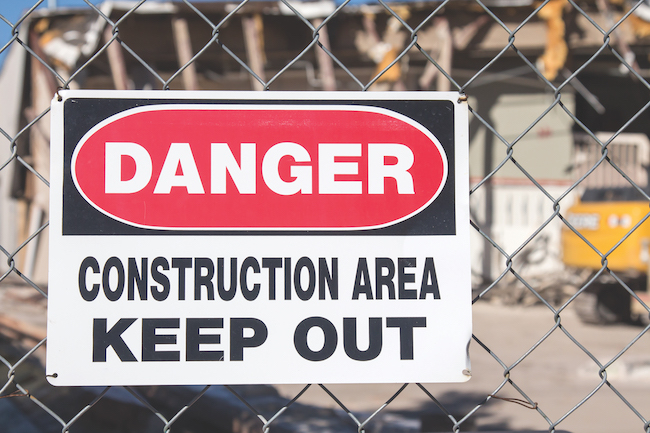

Contractors need to stay ahead of the changes in the construction insurance market. PHOTO: Getty Images
To manage risk, you and your company draw on two key risk management areas. The first is the use of risk controls and other solutions that prevent and mitigate risk. The second is risk finance solutions, which provide capital in the event certain risks manifest and cause financial losses.
These two risk management areas often play off each other, with solutions used to prevent and mitigate risk reducing the likelihood and severity of claims against the risk finance solutions.
From a risk finance perspective, the claims made against the risk finance products are a rich source of data that can help create new and improved risk controls. The interplay between risk controls and risk finance is a virtuous cycle of risk management and all organizations involved in the construction sector should ensure these two risk management areas are aligned. This linkage will continuously improve the risk management platform for both your organization and the projects you work on.
In recent years, there have been several trends within the global construction marketplace that have caused traditional risk control implementation to deteriorate. We are now seeing signs the risk finance market is beginning to firm.
Risk finance products like professional liability, property insurance, casualty insurance and subcontractor default insurance are all showing signs of price firming in most global regions. This is a major development, as firming could mean the beginning of a hard insurance marketplace – a term used by the insurance sector signifying that the capacity for risk finance is shrinking and thus, the cost of risk financing is going up, or coverage under risk finance solutions is becoming limited.
Stakeholders within the construction sector can expect to see some firming in the areas mentioned above, or can at least expect to be asked for more information from their brokers in order to better assess the risk and avoid price increases or coverage limitations. All stakeholders should do their best to understand not only which insurance product lines will be firming, but they should also be asking their broker and insurance partners what is causing this firming of risk finance terms. It is only through understanding the causes of price firming the industry can put in place the appropriate risk controls to bring the market back to a softer position.
It should be noted that there are factors outside of the construction sector also driving market firming. For instance, the significant losses suffered from natural catastrophes like wildfires and flooding are taking a toll on insurers. Outside factors aside, the following are some of the high-level trends from within the construction sector that appear to be driving market firming:
Low margins
Builders are experiencing margin deterioration on a global scale. A lower margin environment means more risk.
Labour Shortages
Both the design and construction sector are experiencing a deterioration in the quality of their workforces as the most experienced members retire. The supply of new experienced labour is not keeping up, and less experience leads to greater risk.
Interaction between design and construction
The global construction market has been flooded with several new construction delivery models and most are creating communication disruptions between the design and construction communities. More collaboration and communication between these two communities is required to improve losses being suffered by insurers.
Project size and complexity
Projects have become more complex and that adds risk. In addition, we are seeing more large projects that can cause bigger losses. This leads to claims against insurance policies that erode the entire policy limits.
Lack of technology adoption
New risk-reducing technologies are coming to the market. However, construction stakeholders are slow to adopt these solutions, in part because the flood of new choices is hampering adoption. At the same time, lower margins within the industry do not help with innovation adoption.
The “level playing field” assumption
When bidding against your competition, do not assume you are bidding against a competitor that is using the same labour, material, technology, supply chain, etc. In an age of massive change with so many solutions coming to market, never assume you are on a level playing field and always strive to learn about the better solutions.
Owner engagement
Construction experience within the owner community is contributing to the increased frequency and severity of insurance losses. Owners need to find ways to improve their employees’ knowledge of construction risk and procurement models. Meanwhile, owners need to look at models that improve communication and collaboration throughout the value chain.
Your main takeaway from all this should be to prepare for a changing insurance sector. There are several factors driving the insurance sector’s firming, so ensure you understand these factors and be prepared to help your insurance partners understand how your company, or your project, is addressing these factors through the use of strong risk controls that prevent and mitigate risk.

David Bowcott is Global Director — Growth, Innovation & Insight, Global Construction and Infrastructure Group at Aon Risk Solutions. Please send comments to editor@on-sitemag.com.
This column first appeared in the August 2019 issue of On-Site. Click here to read through the full issue.




